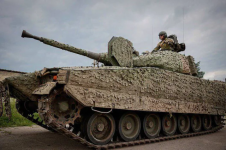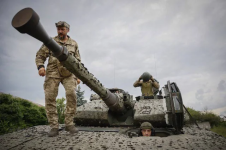I remember a lot was made about the 5/4 ton truck line when we first got them that the chassis was standard but the rest was modular so that for instance you could switch out a command post module with a cargo bed or a line layer. I don't ever recall it being done. If the chassis went N/s for some reason it just went into workshop for repairs for a few days. Of course peacetime use and wartime use are two different things.
I kind of wonder how much of a problem the logistics guys would have with that due to stock numbers and such.
The sigs used to go all crazy if you modified the radio installation kit. There's an anecdote about when F Bty deployed to Kabul, the command post designated to go was a clapped out piece of junk so they swapped out its radio installation into the Battery Captain's box van. It caused no end of consternation in Montreal when they checked the CFR number against the installation inside/stock number. Took a year to sort out.
I'm not saying that you can't sort that type of stuff out. I'm not sure we're that flexible, however.
The idea is a good one but my guess is that you pay for that modularity, probably won't use it and will have no end of problems with the power (and possibly hydraulic), air conditioning, heating etc, connections to the rear end radios, electronics, weapon systems, NBCD air pressurization, fire extinguishers etc. etc.
Just as an aside, I'm surprised the Boxer is a right hand drive. Great for the Brits but ...





